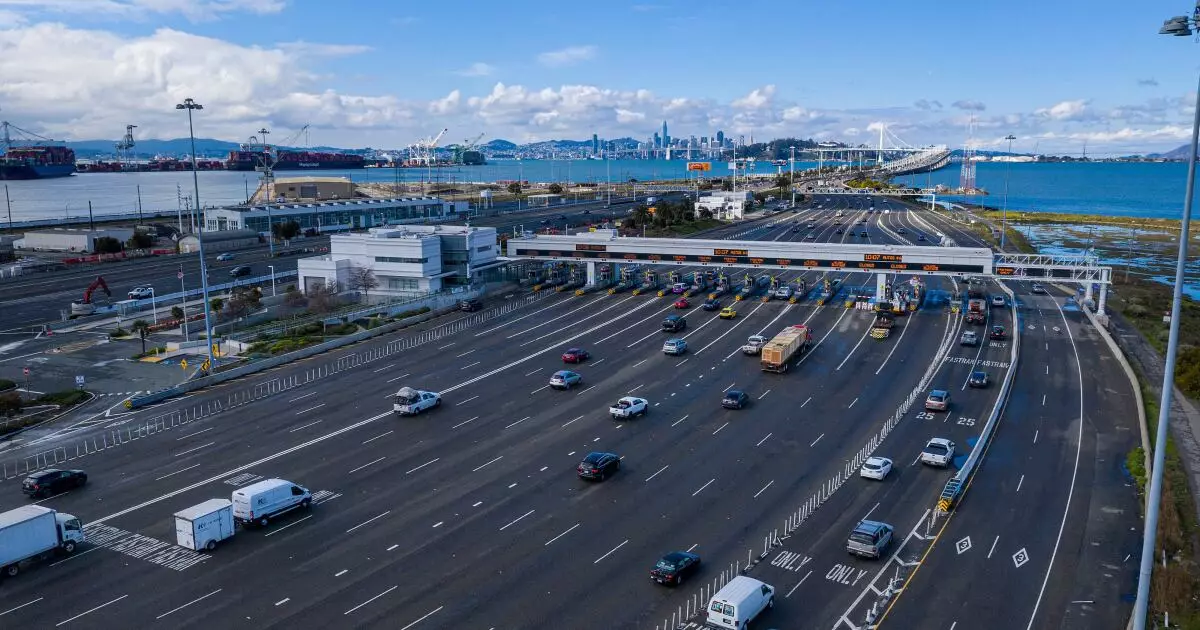As we watch the landscape of American infrastructure funding evolve, it becomes glaringly apparent that two-thirds of U.S. states are scrambling for solutions to a devastating problem: inadequate funding for transportation. According to the American Road and Transportation Builders Association (ARTBA), an astounding 130 transportation funding bills have emerged in the first quarter of the year across 37 states. While this responsiveness is commendable, the troubling reality is that many of these proposed solutions—particularly those involving tolling—may lead us down a hazardous path, both economically and politically.
With the gas tax—historically the backbone of road funding—failing to keep stride with the growing needs of our infrastructure, states are exploring various alternatives. Among these, the recent legislation passed in Indiana to toll all interstates stands out, raising several eyebrows. While supporters advocate for user fees that ensure those who benefit from the roads contribute to their upkeep, the implications of widespread tolling could disproportionately burden working-class families who rely on these highways daily.
The Tolling Debate: A User Fee or a User Trap?
Indiana’s House Bill 1461 has sparked intense debate, with Representative Jim Pressel suggesting that “you pay for what you use.” On the surface, this rationalizes tolls as a legitimate source of revenue; however, the fundamental flaws within this premise cannot be overlooked. When the state places the responsibility for road funding onto the shoulders of daily commuters through tolls, it ignores the necessity for a fair and equitable funding structure. An increasing number of toll roads can morph into a user trap, displacing the burden from corporate interests to the very citizens who keep the economy moving.
Moreover, the financial forecast indicating a whopping $38.2 billion potential revenue from tolling between 2029 and 2050 raises legitimate concerns. Are we being overly optimistic, or are we setting ourselves up for a long-term cycle of dependency on road user fees? Tolling could become a crutch that prevents lawmakers from addressing the root issues, including the need for comprehensive reform in how we finance our infrastructure. Developers and large corporations that contribute to congestion should also be held accountable for their roles rather than letting the burden fall on individuals who already struggle with rising living costs.
Recurring Revenue: The Road to Sustainability or a Tolling Trap?
As nearly 25% of the current bills proposed seek recurring revenue, the question must be asked: are we truly solving issues of transportation funding, or are we simply shifting other burdens onto citizens? The introduction of fees tied to electric vehicles (EVs) and other alternative measures appears timely, yet their implementation raises further concerns. With a considerable percentage of residents transitioning to fuel-efficient vehicles, it’s increasingly vital to scrutinize how these measures could impact lower-income families.
The quest for sustainable funding also leads back to the dilemma of fairness. A blanket application of taxes or fees on EV owners may inadvertently target those who are taking steps to lower their carbon footprint. Thus, instead of fostering an environment that encourages eco-friendly choices, policymakers risk creating an antagonistic relationship between government and constituents striving for sustainable living.
The Role of Innovation: A Path Forward Beyond Tolls
While states like Indiana and Maryland are leveraging tolling and various fees, it’s imperative to consider alternative revenue sources that build a robust future for American infrastructure. For example, North Carolina’s prospect of letting local governments issue bonds shows promise, as it aligns funding efforts with local economic dynamics while avoiding the regressive impacts of toll taxes. Empowering local governments fosters accountability and allows citizens to see the direct return on investment from their contributions.
Innovations in revenue generation, such as integrating technology to create dynamic pricing models that adjust tolls based on demand and traffic conditions, may offer more equitable solutions compared to static tolls. Such measures, however, must be coupled with comprehensive transparency and community engagement to ensure that they serve the interests of the public rather than merely generating revenue without purpose.
State vs. Federal Initiatives: A Unified Approach is Needed
At the federal level, Congress is beginning to address the complications accompanying declining gas tax revenues. The introduction of a national EV fee signals recognition of the shifting landscape in transportation funding, yet the nuances in implementation remain open to debate. As states experiment with tolling and new taxes, a cohesive federal strategy is necessary to harmonize efforts and avoid a patchwork funding approach that further complicates the infrastructure crisis.
In essence, while we urgently need to address road maintenance and updates, it is the responsibility of legislators at all levels to reject regressive tolling mechanisms that burden everyday citizens. What we require are creative, holistic solutions that place infrastructure sustainability and fairness at the forefront of potential financing measures. The stakes are high, and as states vie to implement their varied strategies, we must carefully consider the implications of any funding approach that risks widening the gap between economic classes.


Leave a Reply